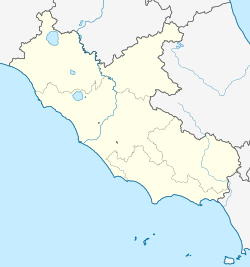Bellegra
In this article we will explore the topic of Bellegra from different angles. We will analyze its impact on current society, as well as its historical relevance. We will also examine the different perspectives that exist around Bellegra, from expert opinions to personal experiences. Through this analysis, we will seek to offer a comprehensive view of Bellegra and its influence on various aspects of daily life. Additionally, we will explore possible solutions or approaches to address the challenges related to Bellegra. We hope that this article will be of interest to those seeking to deepen their knowledge about Bellegra and its implications in contemporary society.
Bellegra | |
|---|---|
| Comune di Bellegra | |
 Bellegra seen from Olevano Romano | |
| Coordinates: 41°53′N 13°02′E / 41.883°N 13.033°E | |
| Country | Italy |
| Region | Lazio |
| Metropolitan city | Rome (RM) |
| Frazioni | Vaccarecce, Vadocanale, Fontanafresca |
| Government | |
| • Mayor | Flavio Cera |
| Area | |
• Total | 18.78 km2 (7.25 sq mi) |
| Elevation | 815 m (2,674 ft) |
| Population | |
• Total | 2,839 |
| • Density | 150/km2 (390/sq mi) |
| Demonym | Bellegrani |
| Time zone | UTC+1 (CET) |
| • Summer (DST) | UTC+2 (CEST) |
| Postal code | 00030 |
| Dialing code | 06 |
| Patron saint | Pope Sixtus II |
| Saint day | August 6 |
| Website | Official website |
Bellegra is a town and comune in the Metropolitan City of Rome, in the Lazio region of central Italy.
Its original name since 11 January 967 had been Civitella (Latin: Civitas Vitellia). The town council changed that name to its current one on 10 October 1880, out of the belief that the town lay on the site of an ancient town called Belecre, possibly from the Latin bella aegra (blood-stained wars).[4]
References
- ^ "Superficie di Comuni Province e Regioni italiane al 9 ottobre 2011". Italian National Institute of Statistics. Retrieved 16 March 2019.
- ^ Demographics data from ISTAT
- ^ "Popolazione Residente al 1° Gennaio 2018". Italian National Institute of Statistics. Retrieved 16 March 2019.
- ^ ComuniWeb.it "Bellegra" (in Italian)



